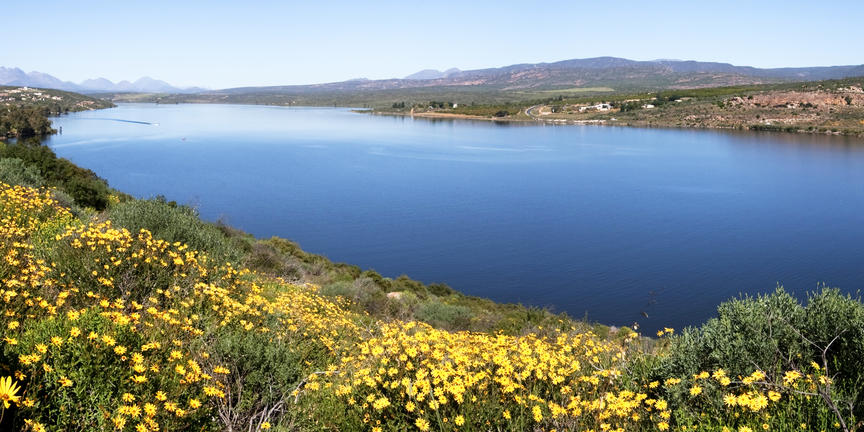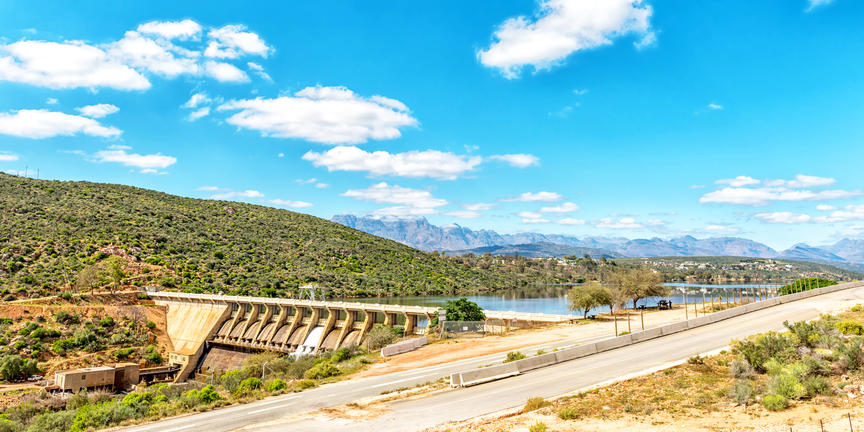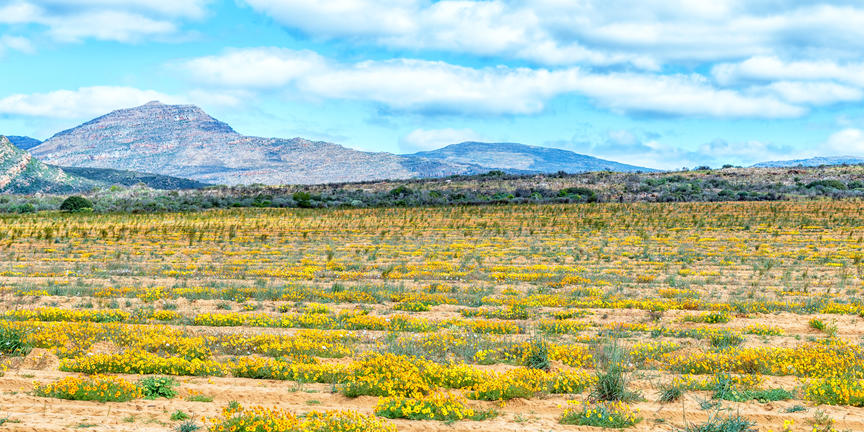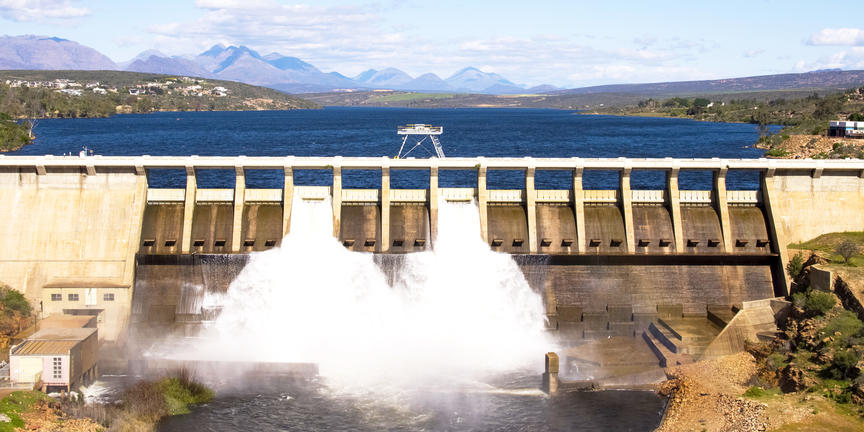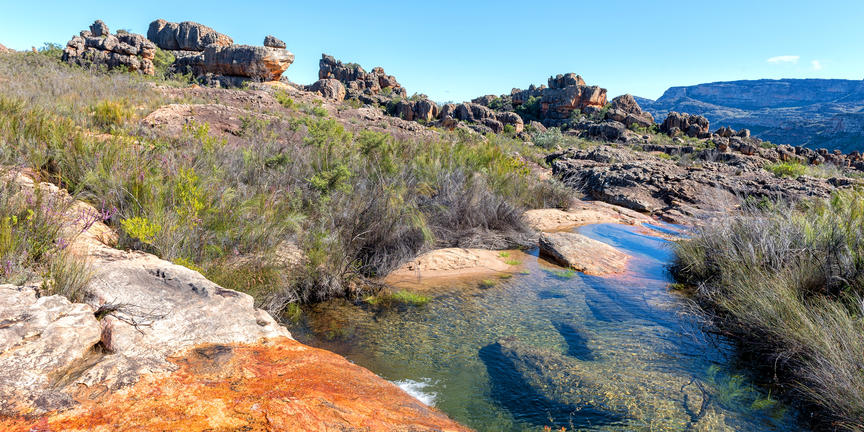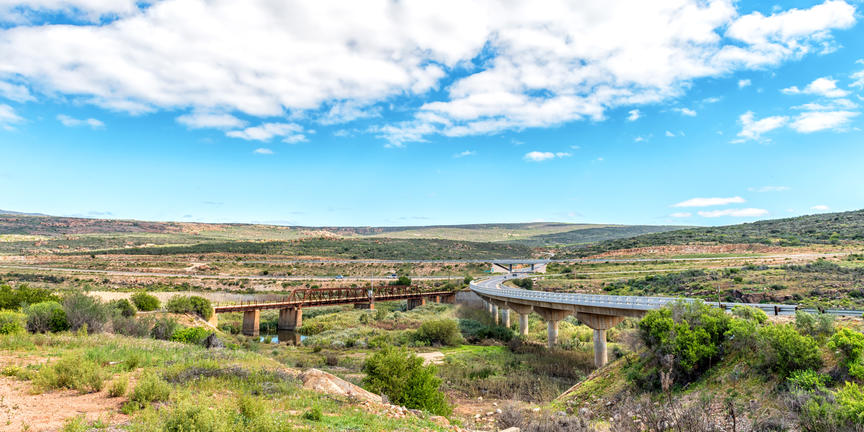Located in the scenic Olifants River Valley, the town of Clanwilliam is the ‘Rooibos Capital of the World’. The town features an array of tea houses and historical buildings. It is conveniently situated next to a large dam perfect for water skiing, swimming, and fishing. Visitors can enjoy a tour at the Elandsberg Rooibos Estate to view the unique tea-making process, learn about the town’s history at the Old Gaol Museum, explore the ‘Rooibos Route’ and enjoy a cup of tea at one of its many stopovers namely, The Rooibos Teahouse. Don’t miss the opportunity to explore the spectacularly scenic surrounds including: the Cederberg Mountains, the West Coast and the annual wildflower splendour of Namaqualand.
History
A BRIEF HISTORY OF CLANWILLIAM
BEGINNINGS
One of the ten oldest towns, Clanwilliam's beginnings goes back to 1660 when a team of Dutch explorers who were sent out by Jan van Riebeeck first reached the Olifants River. When they entered the valley, the saw a large number of elephants on the riverbank. Jan Danckaert, the Dutch cadet in charge of the party, then named the river.
In 1732 the first farm in the Olifants River valley was awarded to Pieter van Zyl. The Town was originally known as Jan Disselsvlei , after Jan Dissel, a local pioneer and a botanist who lived in the Rhenosterbosch at Piquetbergen.
The area first formed part of the district of Stellenbosch, but was declared a sub-district of its own in 1808 by the Earl of Caledon, then Governor of the Cape.
A new name: On 1 January 1814, Caledon's successor, Sir John Cradock, renamed the area after his father-in-law, the Earl of Clanwilliam. It cannot be said with certainty when the town originated, but according to the available information it must have been between 1804 and 1808.
ARRIVAL OF THE 1820 SETTLERS
Lord Charles Somerset (Governor of the Cape Colony from 1814) wanted more people to be sent out to the Cape and to be settled in the Eastern Cape. As a result of his idea of an immigration scheme the British Government decided in July 1819 to go forward with the scheme which for them had a three-fold purpose:
* To populate the eastern frontier of the Cape of Good Hope
* To increase the English-speaking community in their new Colony.
* To ease political tensions in Britain that had been stretched to breaking point with post-war unemployment, industrialisation and poor trade.
On 12 February 1820 the ships "East Indian" and "Fanny" left Cork with four, mainly Irish, groups of immigrants and reached Simons Bay on 30 April and 1 May respectively. From there they sailed to Saldanha Bay. Although Lord Charles Somerset was planning to settle all the settlers in the Zuurveld in the Eastern Cape, the acting Governor, Sir Rufane Donkin, decided to grant land in the vicinity of Clanwilliam to four groups of Irish Settlers to keep them separate from the other Settlers.
The four groups were led by William Parker, Captain Walter Synnot, Captain Thomas Butler and Mnr. John Ingram and consisted of 126 men, 73 women and 159 children. Rev. Francis McCleland, paid by the Colonial Government, accompanied them while Parker was the leader.
Every male immigrant older than eighteen would receive one hundred acres to cultivate and after three years ownership would be transferred to them. The land they would receive was marked out for each group as follows:
Parker: Kleine Valley (1 600 morgen)
Ingram: Groote-en Kleine Patryse Valley (1 350 morgen)
Butler: Taaybosch Kraal (600 morgen)
Synnot: The present farm De Vlei (500 morgen)
When Parker heard that he had to go to Clanwilliam and not Knysna, as he had thought, he continued to cause problems for the authorities and demanded to be settled in Saldanha Bay, but eventually returned to Ireland in 1822.
The rest of the Settlers decided to move to Clanwilliam.
After a short while in Clanwilliam, the Settlers realised that they would not be able to make a living here. The arable land was not enough and the heat necessitated irrigation. Most of them were skilled labourers anyway and even the farmers among them did not understand the South African conditions. They requested a transfer and were taken to the Eastern Cape where they settled.
However, Ingram remained and he was able to buy the land of those who left at a very low price. Also Synnot remained and on 30 November 1821 he was appointed the assistant magistrate of the area.
When, in 1825, Rev. McCleland had only six families left in his congregation he was transferred to Port Elizabeth. The small group who settled here permanently included surnames like Foster, Freyer, Shaw, McMahon, and others. Even though they were a small group, they played a leading role in the area until the first half of the previous century.
GROWTH AND DEVELOPMENT OF CHURCH AND CONGREGATION
Until 1826 Clanwilliam formed part of the town Tulbagh, although a portion of the population chose to attend Zwartlandkerk (Malmesbury).
For more than eighty years Roodezand and Zwartland remain the nearest churches. It should be mentioned that the priest of Tulbagh did visit Clanwilliam once a year for the sacraments and serving the baptism.
Marquard was born in 1789 in Pruise and settled in the Netherlands at the age of 18 where he finished his theological course. After that he was sent to the "Cape of Good Hope" to work with the coloured people of the Clanwilliam district. In 1815 he travelled from Europe and settled in Clanwilliam.
When his fellowship decided to place his mission work under the control of the London Missionary Society in 1816, Marquard was so dissatisfied, that he left their service and joined the "Colonial Reformed Church". He became a member of the Zwartland Church but stayed in Clanwilliam as an independent missionary.
DEVELOPMENT IN THE AREA
In 1914 the Bulshoekdam was built in the Olifantsriver, about fifteen miles north of Clanwilliam, to bring irrigation to Vredendal. In 1935 the Clanwilliam dam was completed. On August 15, 1935 the dam overflowed for the first time.
In June 1958 the national road (N7) between Citrusdal and Clanwilliam finally opened and in 1963 the one between Clanwilliam and Klawer opened.
DEVELOPMENT IN THE TOWN
Although initially very slow, the town gradually grew into a modern country town with a population of 264 whites and 840 coloureds in 1907 to 818 whites, 1,372 coloureds and 24 blacks, according to the census records of 1960.
In 1901, the town received municipal status with Mr. Charles Fryer, one of the descendants of the 1820 Irish Settlers, as the first mayor.
In 1964 the town received its own coat of arms which symbolized the citrus industry and the Olifants River. The motto "Toujours Pret" (Always Ready) is derived from the coat of arms of the Clanwilliams in Scotland.
This picturesque town, the beauty of the Northwest, has had its own hydroelectric generator since 1938 which provided electricity for the most part of the year. In 1958 it was enlarged at a cost of R 80 000. Also the town's water supply scheme was improved in the same year for an amount of R42 000.
A modern Memorial Library was built during 1958 for the amount of R20 000. It was named after Dr. C. Leipoldt, who spent his childhood years here, and his friend, Dr. P. le Fras Nortier, the father of the seedless orange tree.
